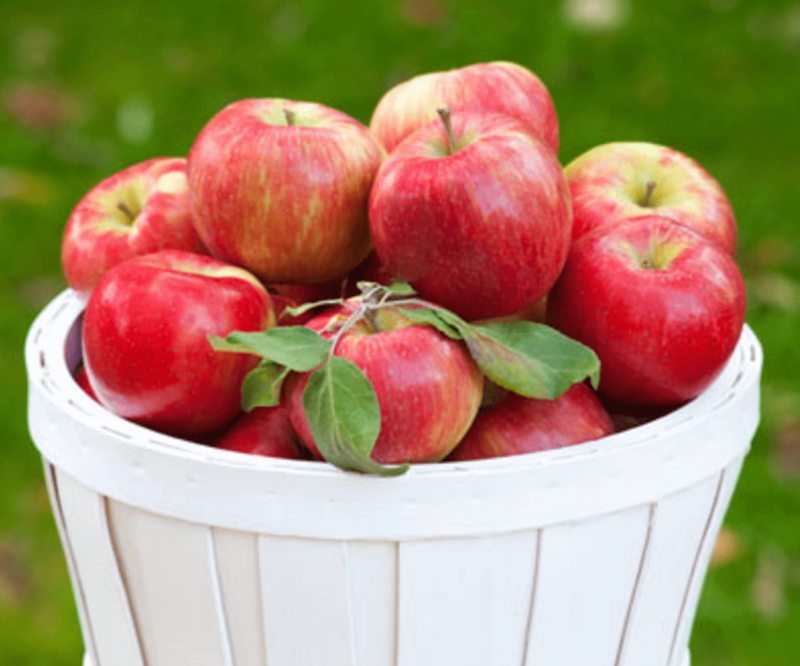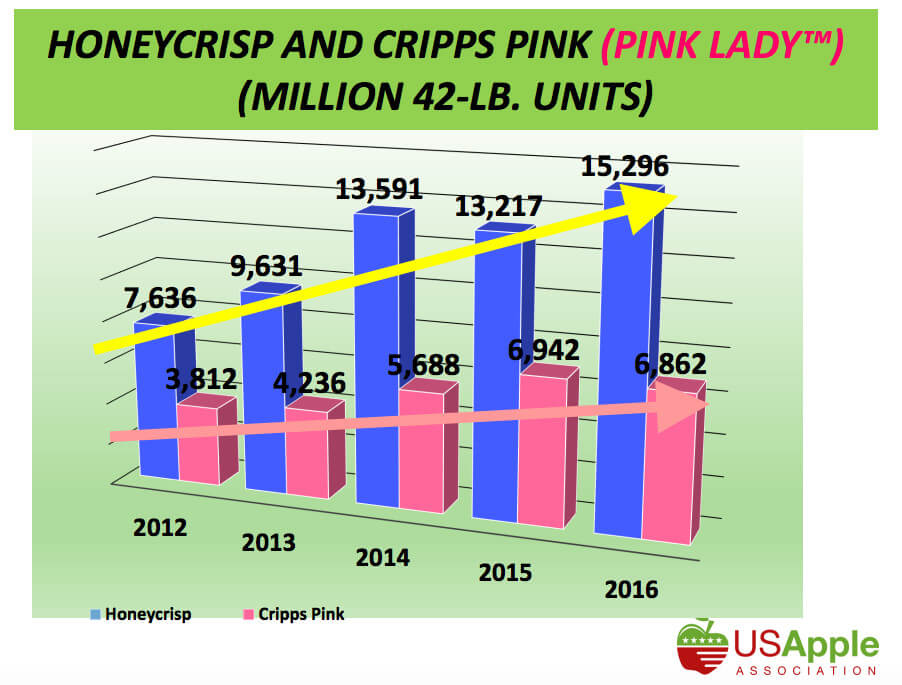The Honeycrisp is a millennial apple born in the 1990s, after years of careful planning. It’s also considered the first “brand name” apple — the University of Minnesota had a patent on it, earning royalties from trees sold to growers.
…
It took 30 years for UMN scientists to develop the Honeycrisp, through a painstaking breeding process and lots of trial and error. Consumers first got their hands on it in 1992, but the buzz and media attention didn’t really take off until 2007. (Food trends like artisanal, organic, and local foods certainly helped.)
…
For consumers and breeders, Honeycrisp has become the standard-bearer on both of these fronts. It’s the most successful of the apple varieties developed at UMN’s Agricultural Experiment Station (MAES), a horticultural research center that breeds new apples.
Dr. James Luby, a professor at UMN, says consistency has been a key factor in the Honeycrisp’s success, and a huge reason why other apple breeders want to emulate it.
…
Honeycrisps’ consistent crispness isn’t a function of freshness but rather of marvelous breeding.
…
The Honeycrisp’s consistent crunch is its strong point, but Luby says breeders are working on apples that have the potential to outshine it.
The GLP aggregated and excerpted this article to reflect the diversity of news, opinion and analysis. Read full, original post: Honeycrisp was just the beginning: inside the quest to create the perfect apple
































